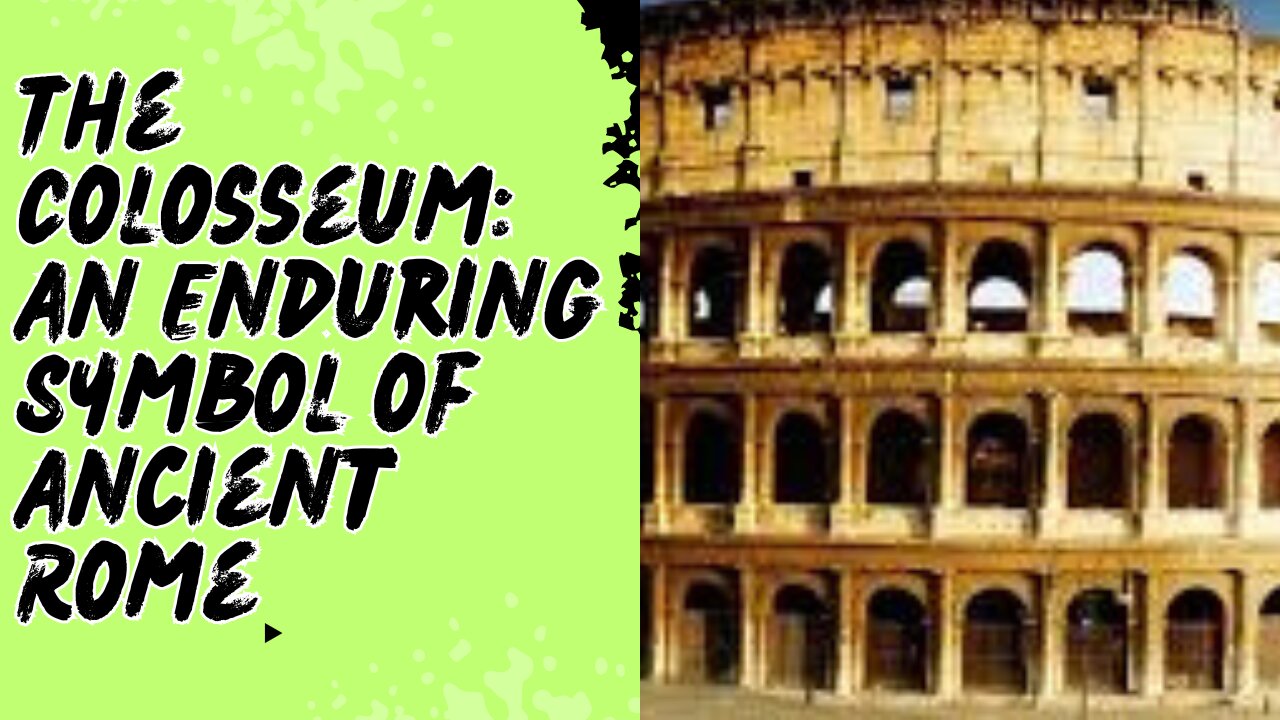Premium Only Content

The Colosseum: An Enduring Symbol of Ancient Rome
Your Quaries:-
The Colosseum, an iconic symbol of ancient Rome, stands as a testament to the engineering prowess and cultural vibrancy of the Roman Empire. Constructed between AD 70-80 under the emperors Vespasian and Titus, this monumental amphitheater could hold up to 80,000 spectators. Known originally as the Flavian Amphitheatre, it hosted gladiatorial contests, public spectacles, and dramatic performances, serving as a focal point for social and political life in Rome.
Architecturally, the Colosseum is a marvel, featuring a complex system of vaults and arches that support its massive structure. Its elliptical design ensured optimal viewing angles for all attendees. The arena itself boasted a sophisticated underground network of tunnels and chambers, used to house animals and slaves, enhancing the drama of the events held there.
Despite centuries of damage from natural disasters, neglect, and stone plundering, the Colosseum remains a powerful symbol of Rome's enduring legacy. Today, it attracts millions of tourists annually, standing as a poignant reminder of both the grandeur and the brutality of Roman civilization. Its preservation and study continue to offer insights into ancient Roman society, architecture, and engineering, solidifying its place as a cornerstone of historical and cultural heritage.
-
 22:50
22:50
DeVory Darkins
14 hours ago $16.52 earnedDemocrats UNLEASH IMPEACHMENT on Trump
53.8K168 -
 1:17:34
1:17:34
Mike Rowe
11 hours agoA Masterclass In The Collapse Of Woke Culture With Anson Frericks
59.6K37 -
 17:51
17:51
Stephen Gardner
11 hours ago🔥YES!! Trump CUTS CORD on Democrats SECRET PROGRAM!
85.2K65 -
 2:16:49
2:16:49
TheSaltyCracker
11 hours agoMusk Destroys Gov't Money Pot ReeEEeE Stream 02-05-25
159K263 -
 1:10:59
1:10:59
FreshandFit
10 hours agoTop 3 Ways To Overcome A Break Up
122K12 -
 6:32:11
6:32:11
Akademiks
12 hours agoDrake Finally CUTS off FAKE FRIENDS in the Industry. VIOLATES KHALED, LEBRON! Announces album Feb14
95.6K11 -
 27:28
27:28
Glenn Greenwald
15 hours agoGlenn Reacts to Trump's Gaza Take Over: System Update Special
198K443 -
 2:13:49
2:13:49
Melonie Mac
11 hours agoGo Boom Live Ep 36!
108K10 -
 1:02:11
1:02:11
Sarah Westall
12 hours agoFreezing USAID & its Operations in Ukraine: A Massive Money Laundering Organization? w/ Sam Anthony
96K24 -
 2:05:35
2:05:35
Space Ice
15 hours agoSpace Ice & Redeye: Neil Breen's Pass Thru
43.7K1